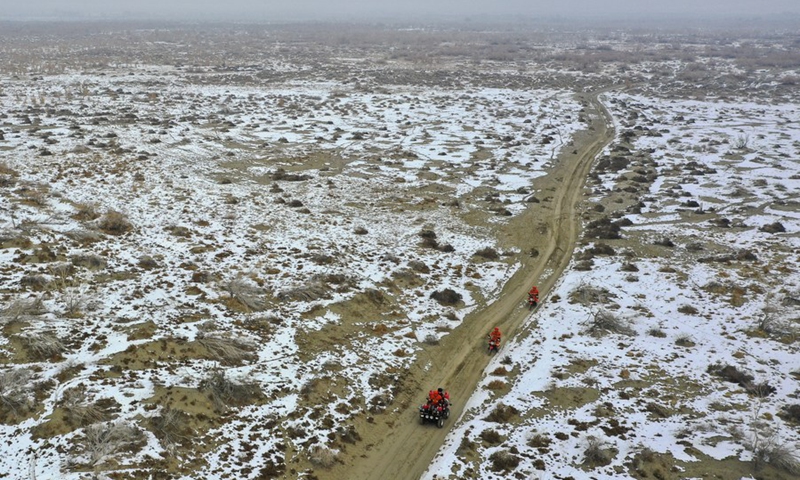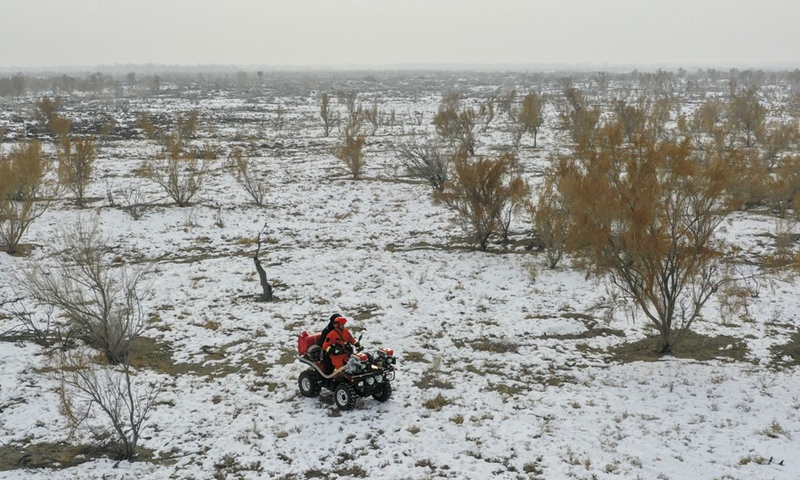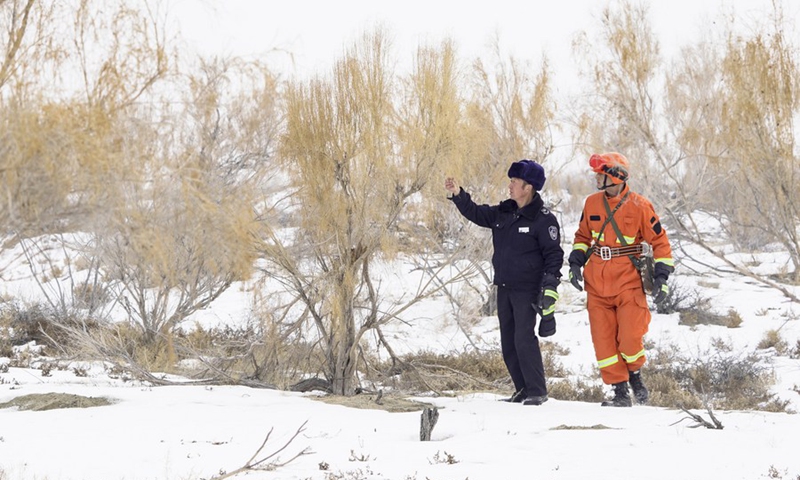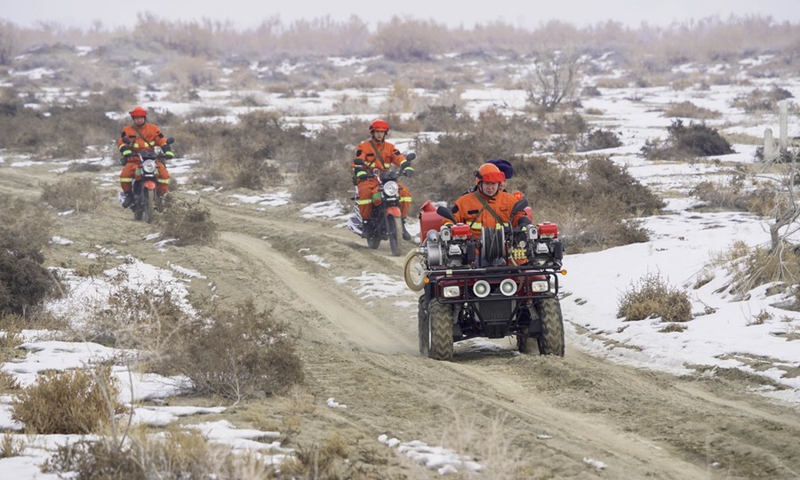
Aerial photo taken on Dec. 4, 2021 shows staff members patrolling the Ganjia Lake forest region in Wusu City of northwest China's Xinjiang Uygur Autonomous Region.(Photo: Xinhua)

Aerial photo taken on Dec. 4, 2021 shows staff members patrolling the Ganjia Lake forest region in Wusu City of northwest China's Xinjiang Uygur Autonomous Region.(Photo: Xinhua)

Staff member from forest management and protection station, along with an emergency team of the Ganjia Lake forest region, check the growth of white saxaul trees in Wusu City of northwest China's Xinjiang Uygur Autonomous Region, Dec. 4, 2021.(Photo: Xinhua)

Staff members patrol the Ganjia Lake forest region in Wusu City of northwest China's Xinjiang Uygur Autonomous Region, Dec. 4, 2021.(Photo: Xinhua)
As winter comes, authorities have been paying more attention to forest fire prevention in the Ganjia Lake forest region in the west of Junggar Basin in Wusu of Xinjiang Uygur Autonomous Region. Forest rangers have also stepped up their patrolling efforts.
In the Ganjia Lake forest region, there are 18 stations that are responsible for forest fireproofing, management of forest resources and grassland, and wild animal protection.
With improved transportation, staff members can now monitor a considerably larger area of woodland. The Ganjia Lake forest region, with an area of roughly 3,920,000 mu (about 2613.3 square kilometers) and over 110 plant species, serves as an important ecological protective screen for preventing land desertification.
